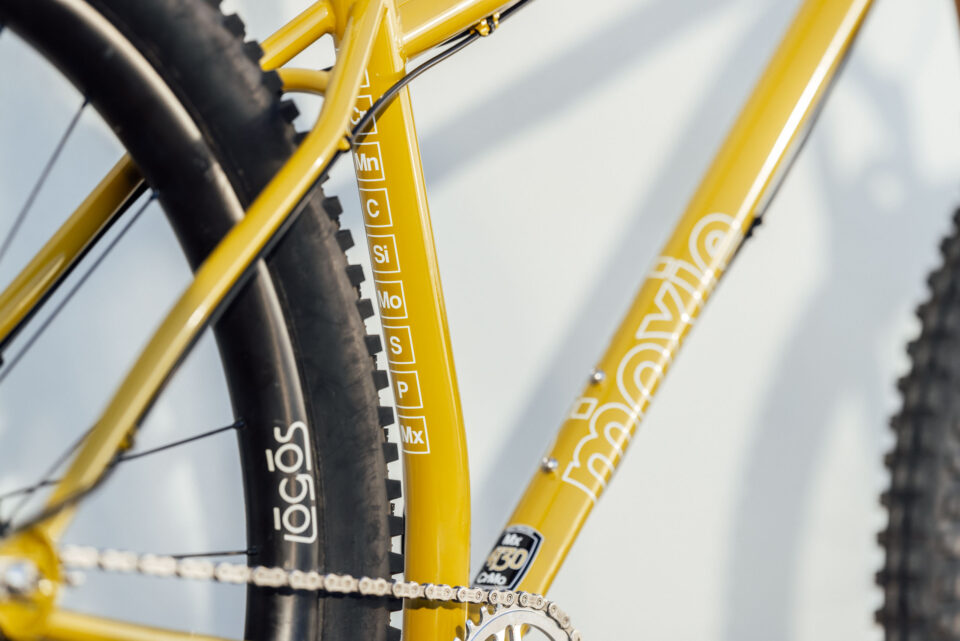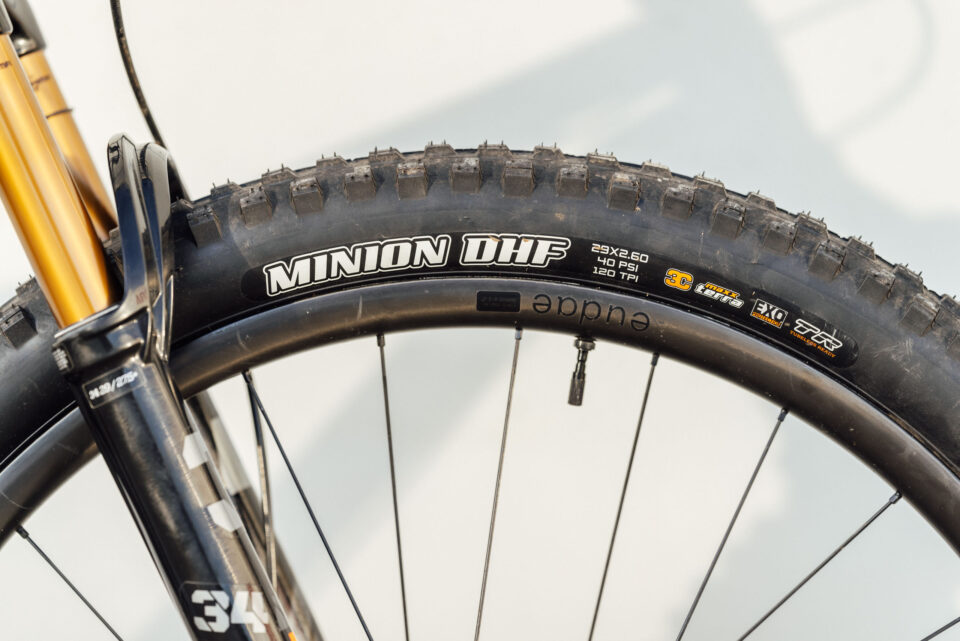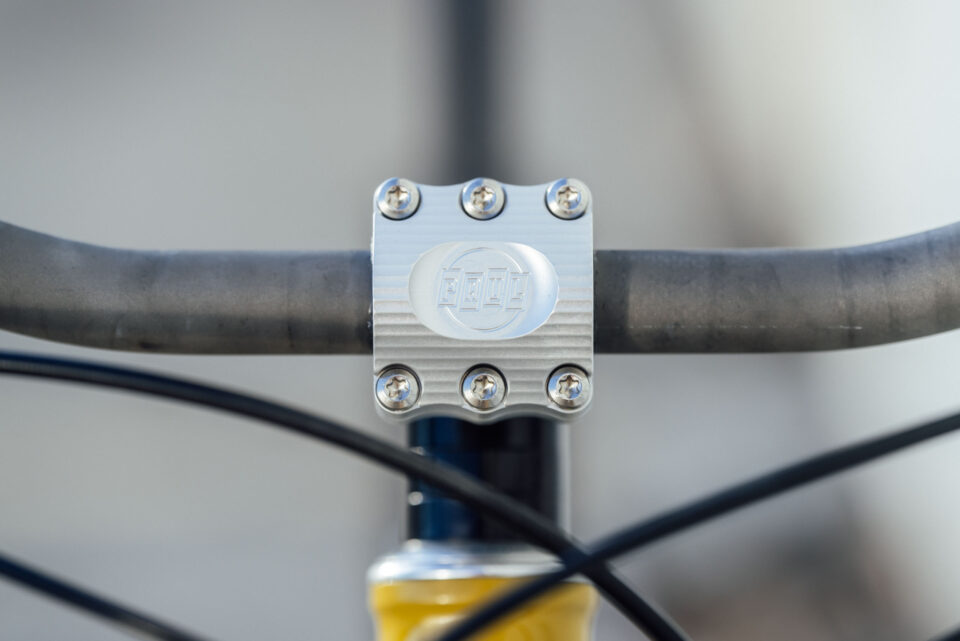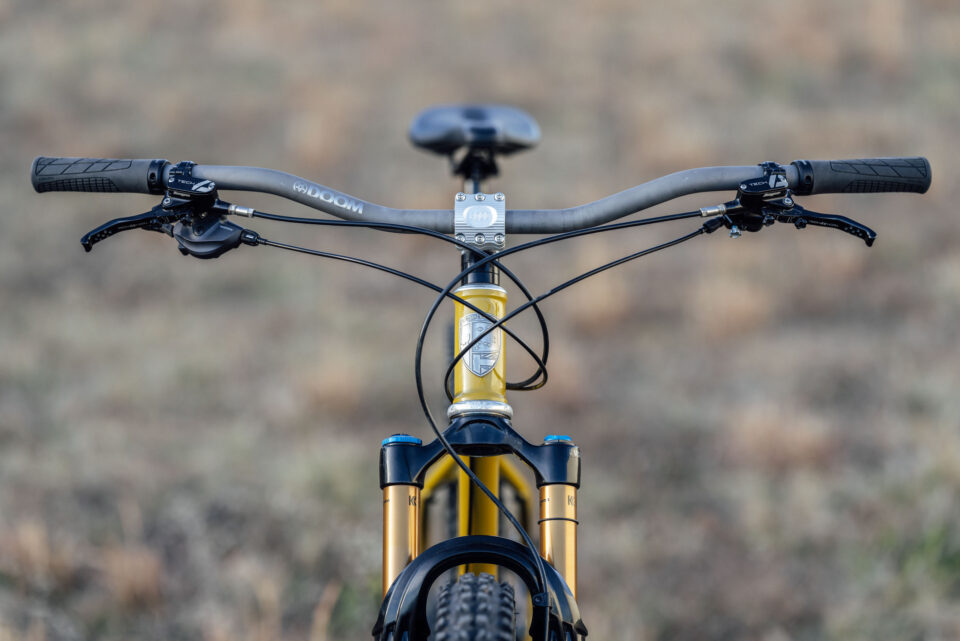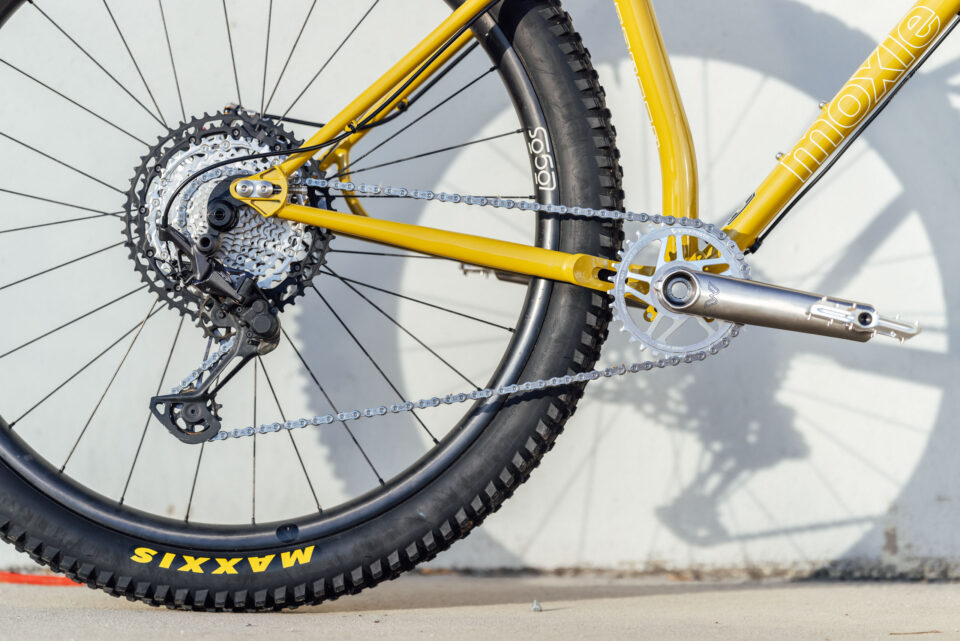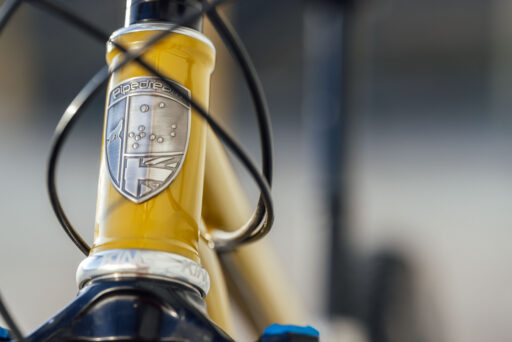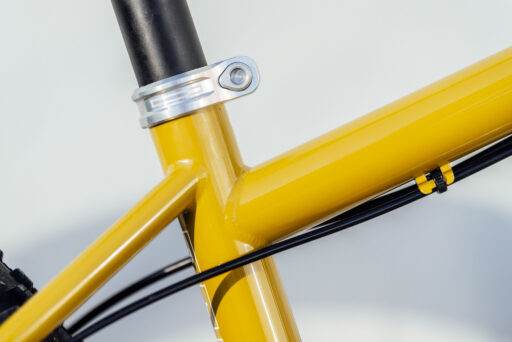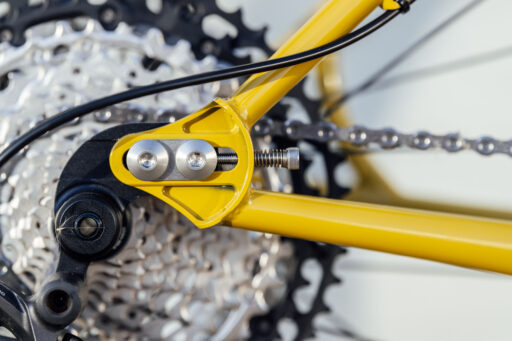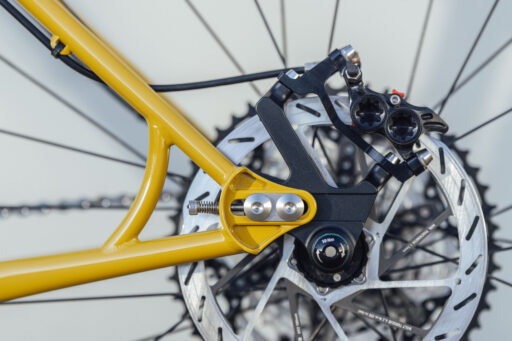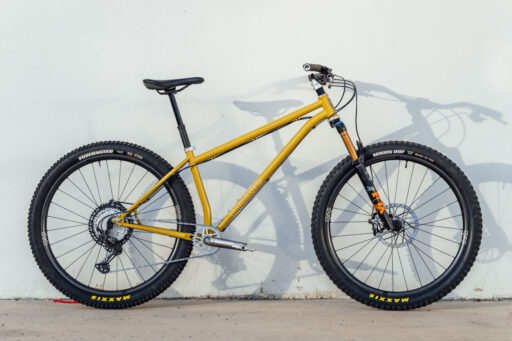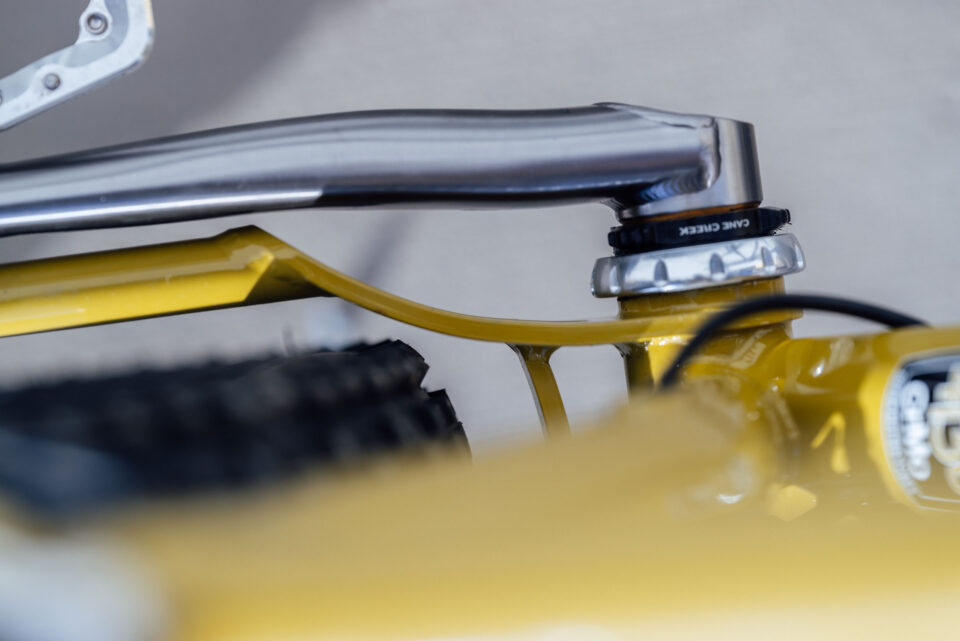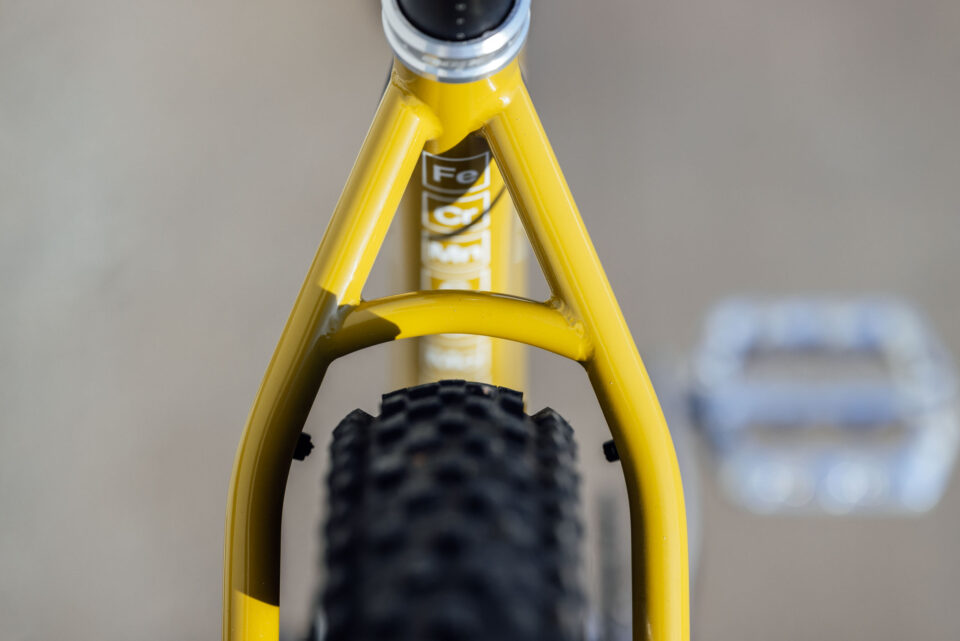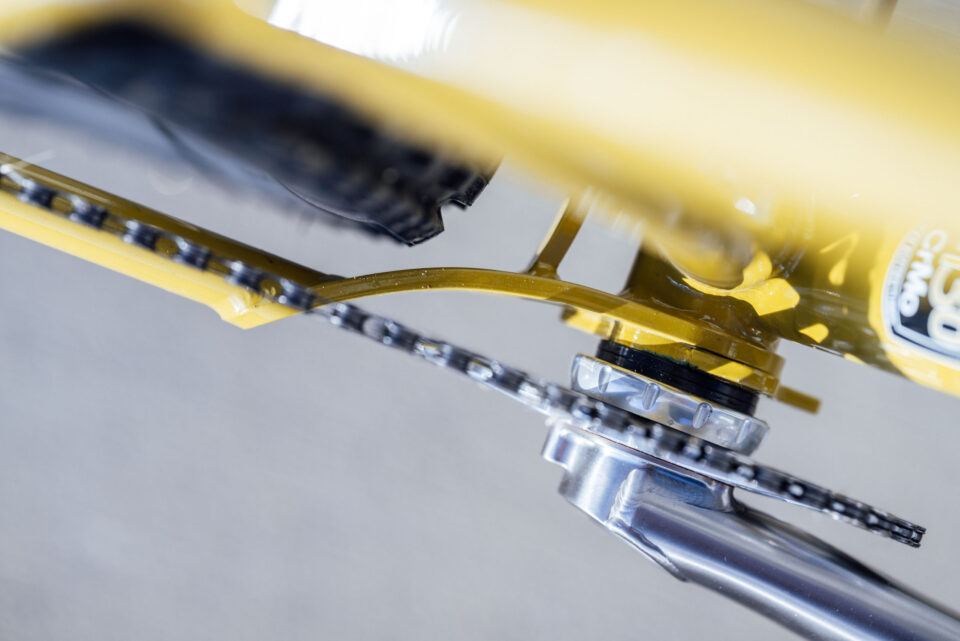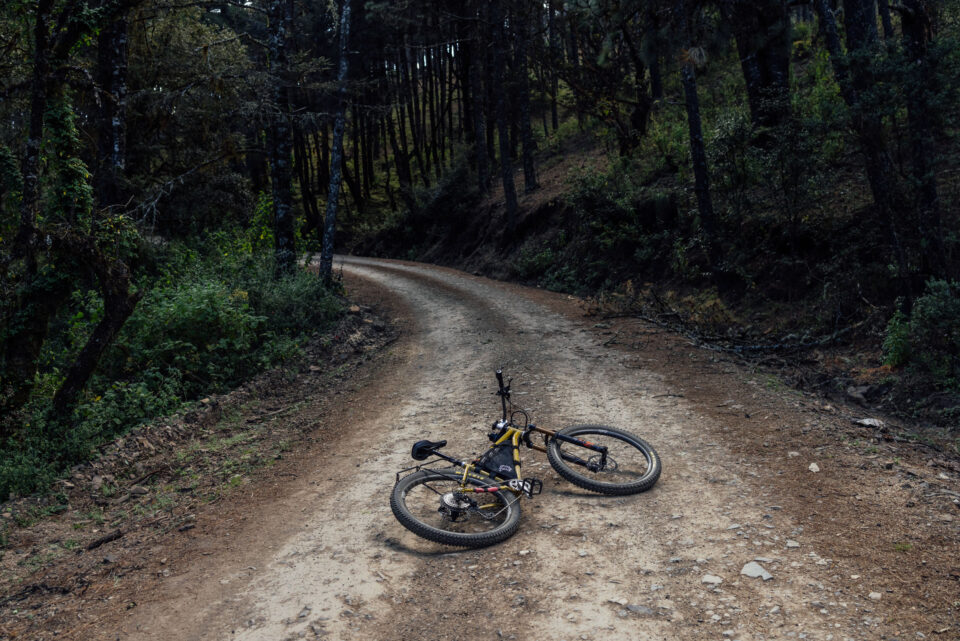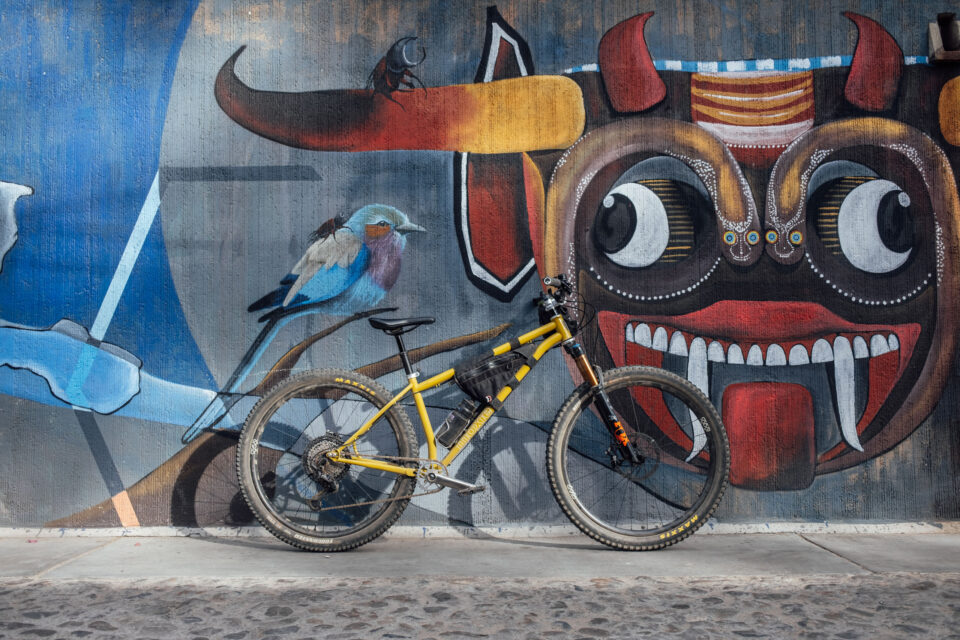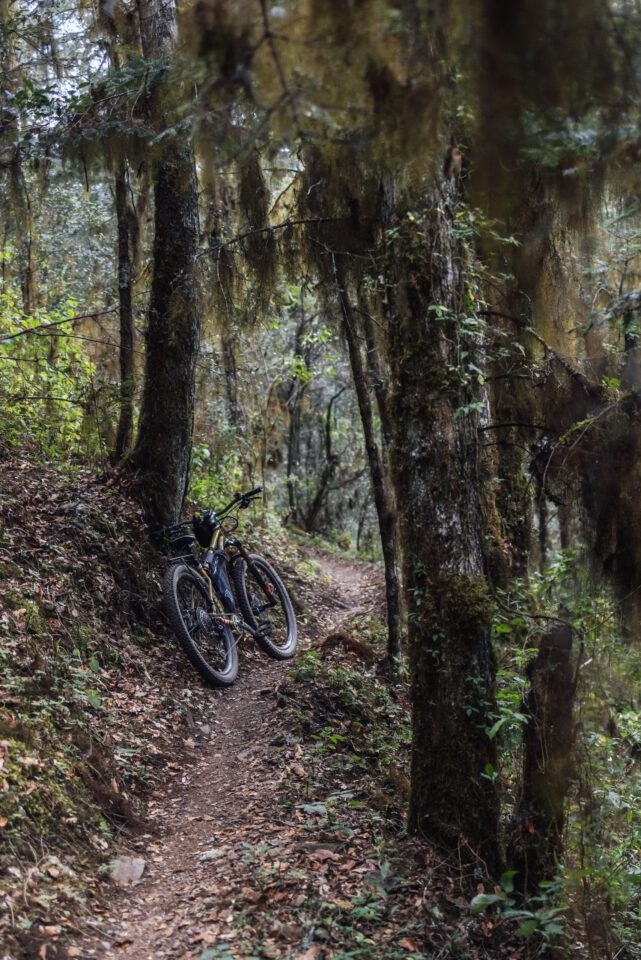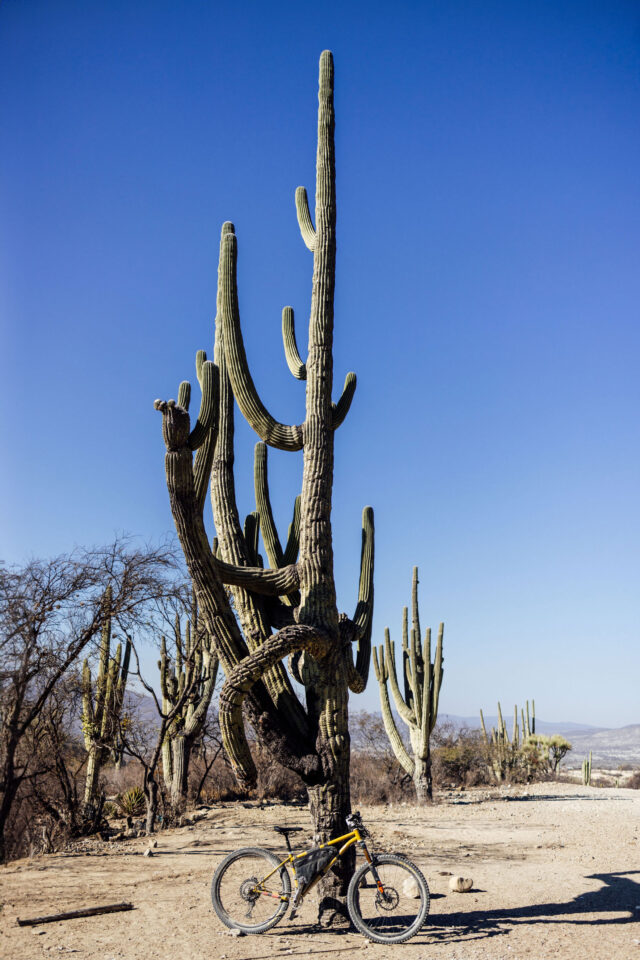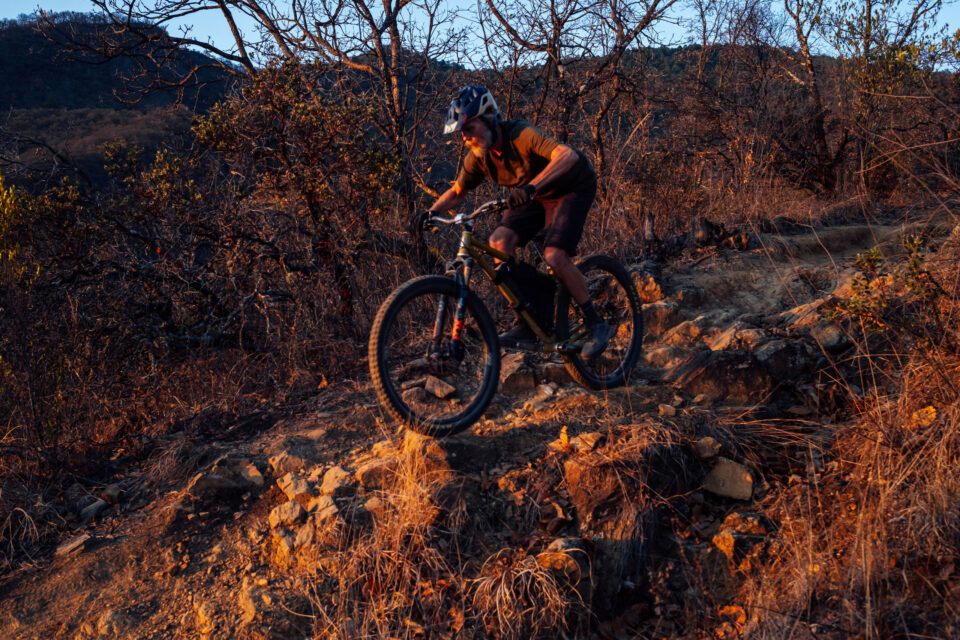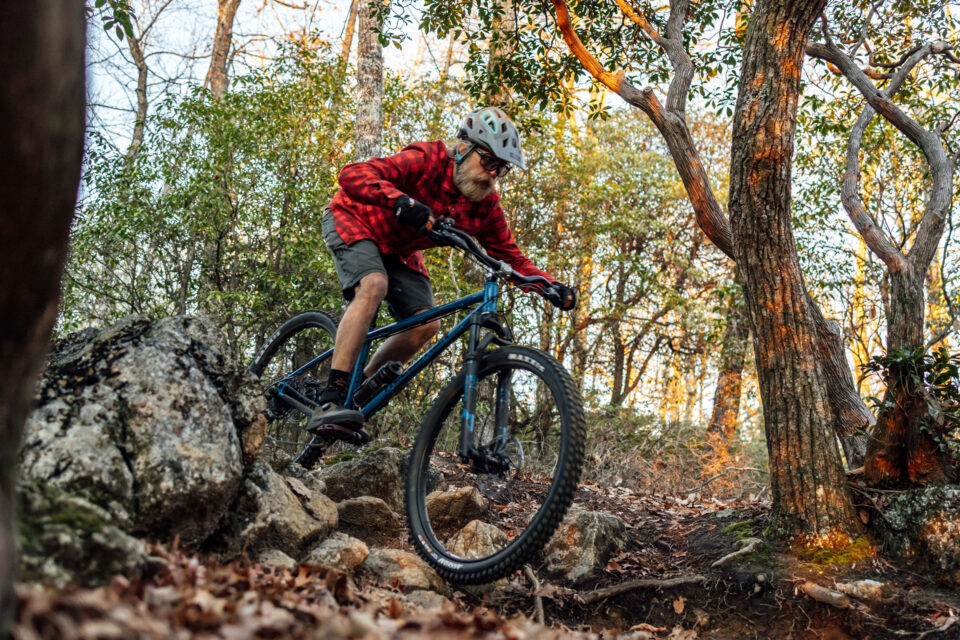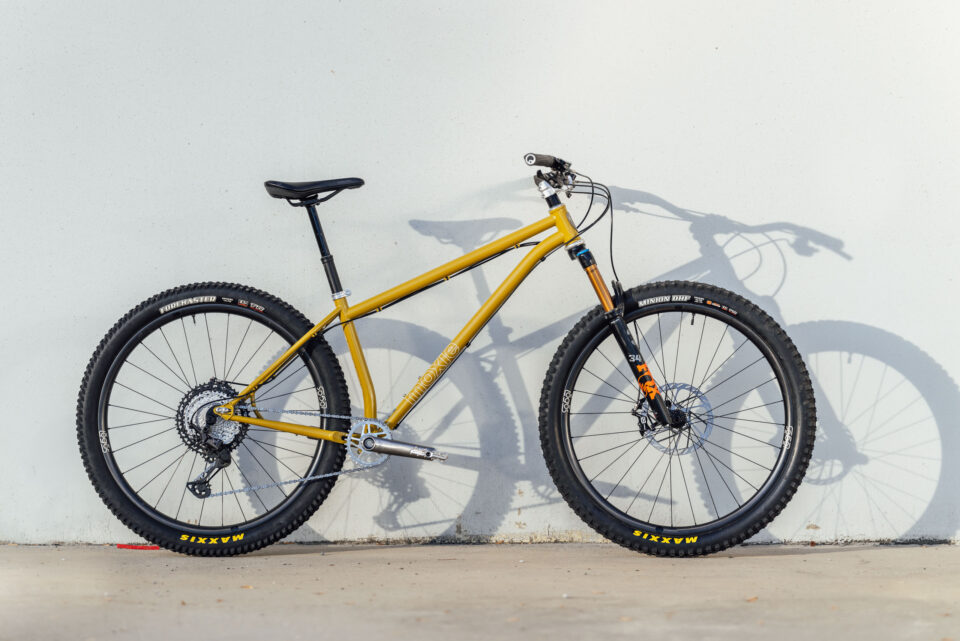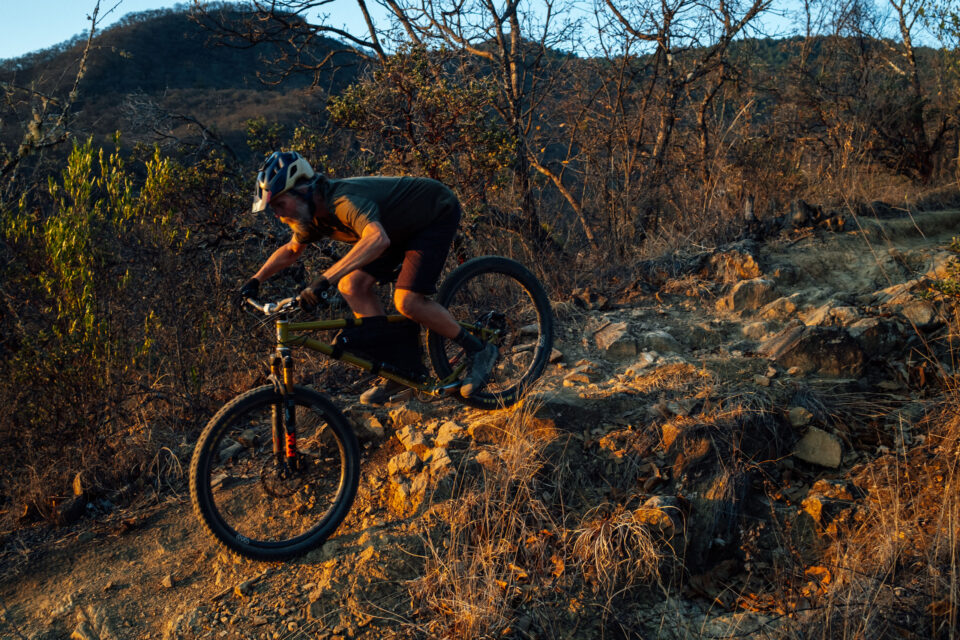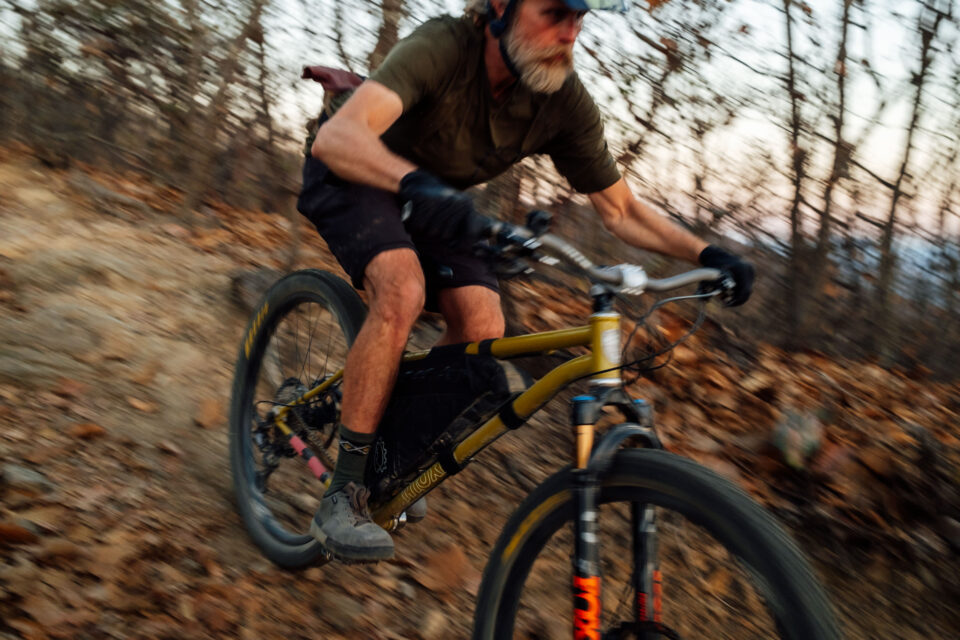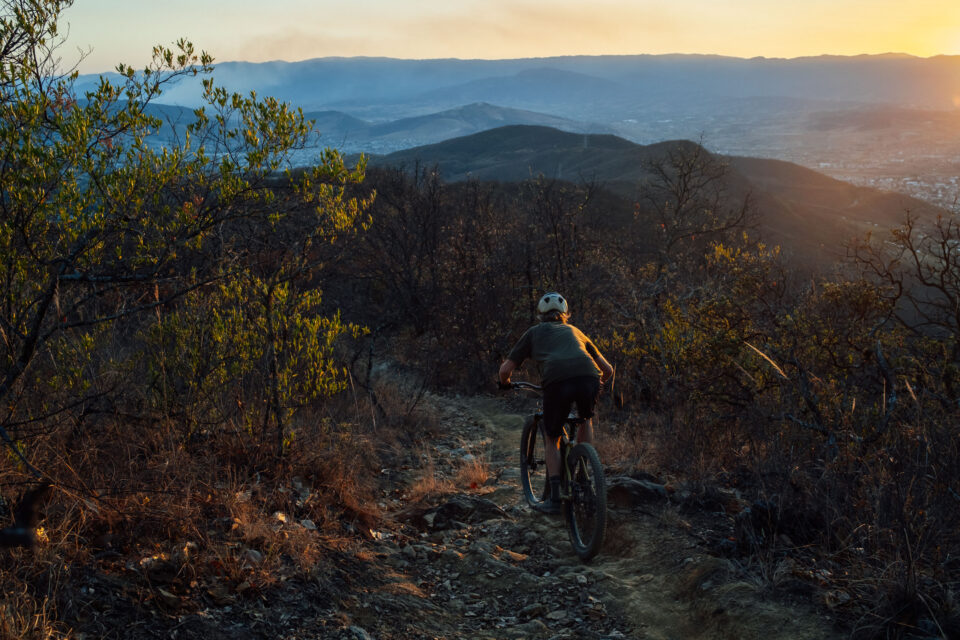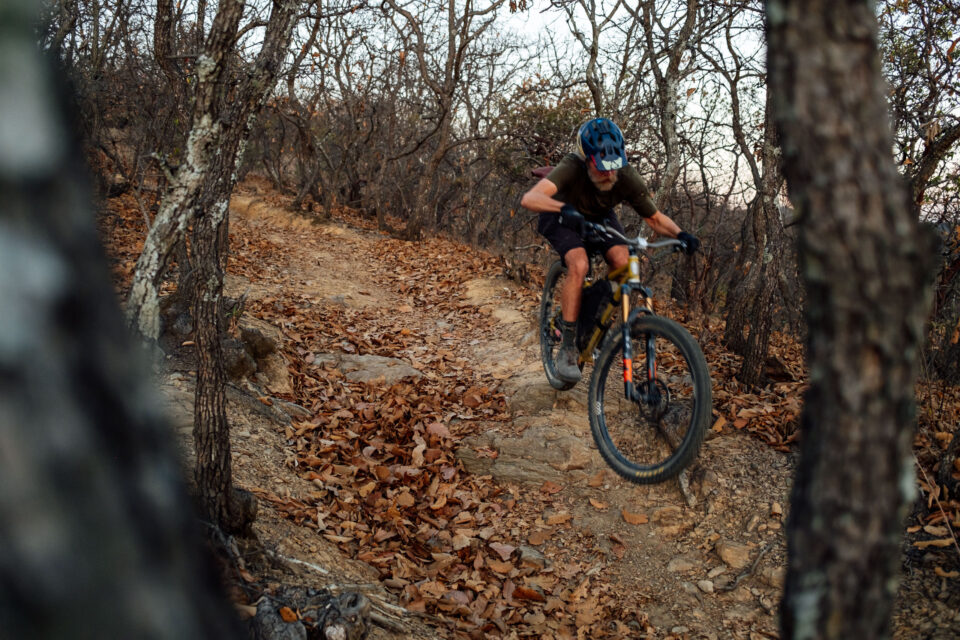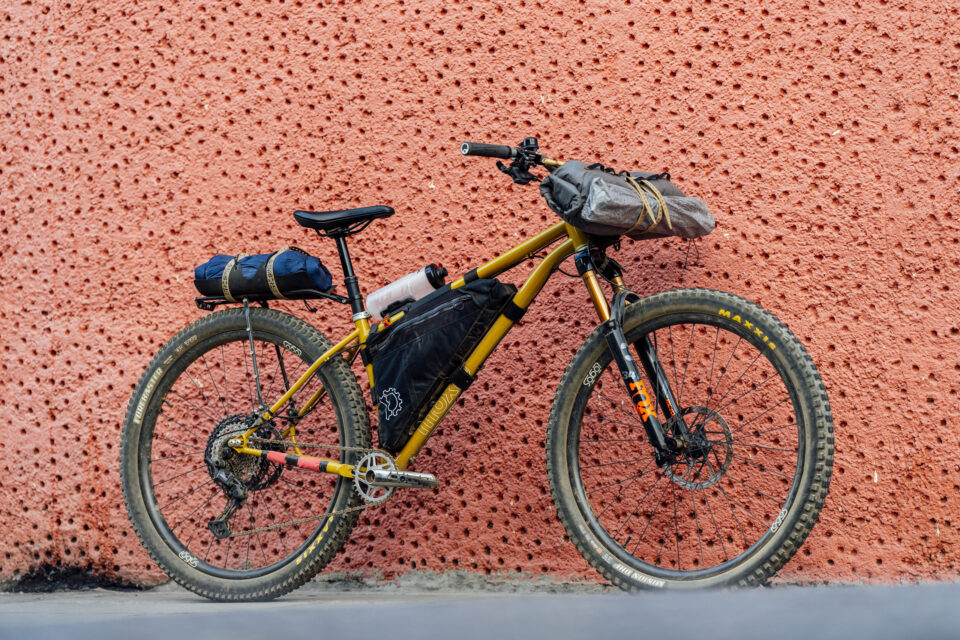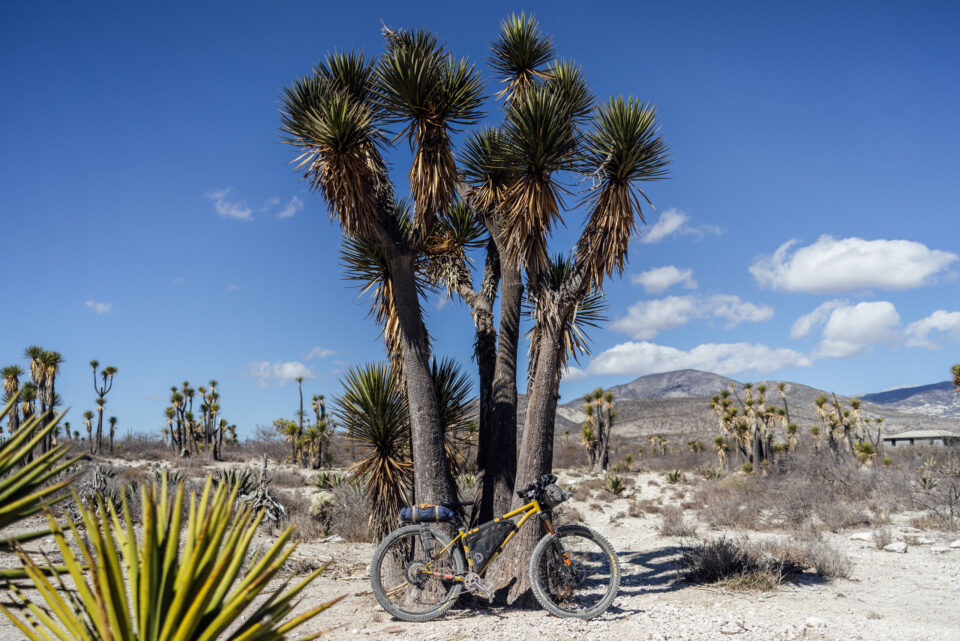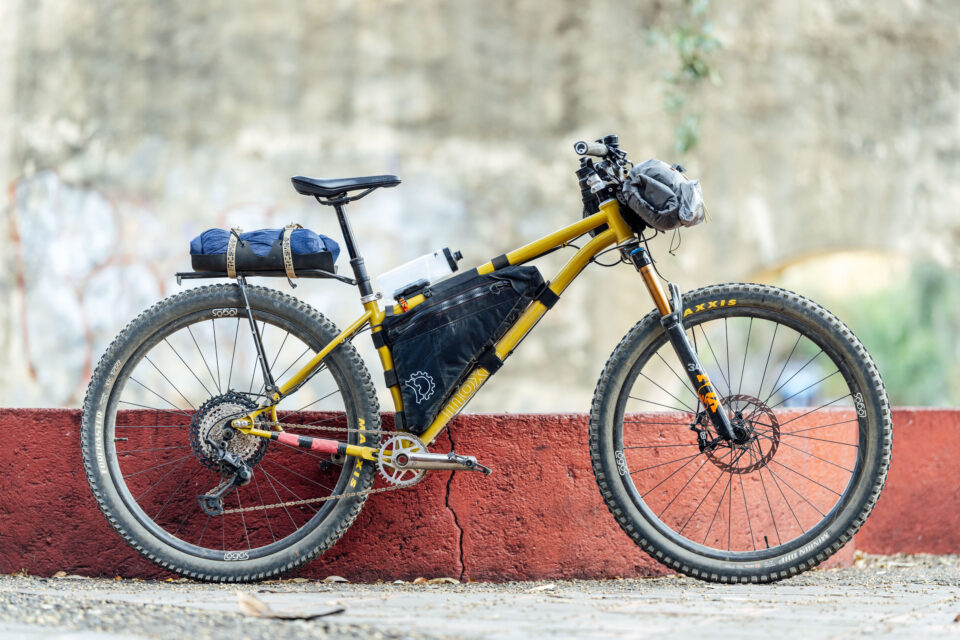Pipedream Moxie Review: Checks You Can Cash
Share This
The Pipedream Moxie wasn’t necessarily on our list of bikes to review this year. However, after a couple of forest gnomes told Logan about its carefully conceived angles, interesting measurements, and unwavering confidence, he decided to give it a shot. Find his detailed Pipedream Moxie Mx3 review here, and learn why it’s the best rugged trail hardtail he’s tried to date…
The psychosomatics of improving my skills (aka progression) was one of the things that first sucked me into mountain biking. Honestly, it still keeps my wheels turning to some degree. I’ve rambled on about it before in more than one of the 8,000+ posts on this site, but my recent experiments in bike reviews have given the concept of “progression” an entirely new meaning.
That is, every hardtail I’ve test-ridden over the last few years has been slightly more progressive than the last. It’s as if I’m working my way up to something. To recap, I’ve tested the revamped Santa Cruz Chameleon, the Cotic SolarisMax, the Pipedream Sirius S5, the Transition TransAM, and now the Pipedream Moxie Mx3, each one a little slacker or longer than the last. That wasn’t happenstance. I’ve been fascinated by this type of trail bike for a while and wanted to explore the fringes of the genre. Down the rabbit hole I went.
I keep thinking I’m going to reach a dead-end in one of the many offshoots of that tunnel and find a bike that’s over the top—one that’s too long and too slack—which is kind of what I expected with the Pipedream Moxie Mx3. In fact, I didn’t even seek this one out. Pipedream snuck a size “Longer” Mx3 frame into the same box as the S6 they sent, the one Neil ended up reviewing because it was too small for me. I cobbled it together with some parts I had on hand last fall and have spent the last five months pedaling it on singletrack and bikepacking routes in the Sierra Norte and Appalachians for this review.
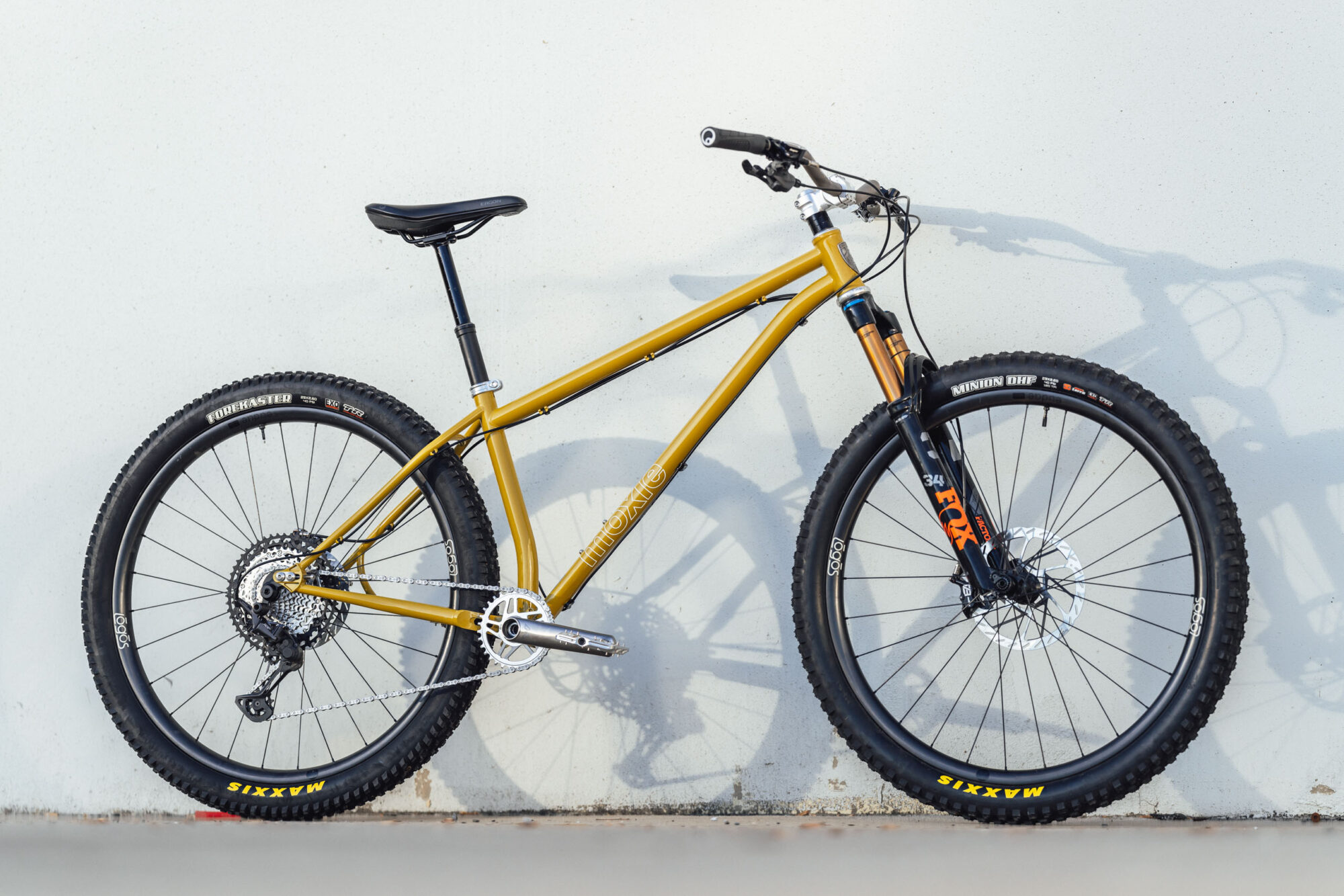
In full transparency, I was actually Moxie-curious before this Desert-color frame suddenly materialized in my shop. When I was reviewing the Sirius S5, I occasionally ran into strangers around Pisgah riding the S5’s bigger sibling, and after a mutual double-take, we’d stop and exchange thoughts about the ride qualities and capabilities of these bikes. Actually, that only happened twice; Pipedream isn’t a widespread brand, after all. Still, after a couple of rendezvous with the Moxie in the wild, I couldn’t help but wonder how it compares to the S5. It was the next step up the proverbial hardtail ladder.
Before I dig in, here’s a quick rundown of how I built this bike, as reviewed:
- Frame: Pipdream Moxie Mx3
- Fork: Fox 34 Factory, 140mm
- Wheels: Logos Eudae, 30mm IW
- Front Tire: Maxxis Minion DHF 2.6″
- Rear Tire Maxxis Forekaster 2.6″ (changed to Teravail Ehline 2.5″)
- Crankset: Cane Creek eeWings, 170mm
- Derailleur: Shimano XT
- Shifter: Shimano XT
- Cassette: Shimano XT, 10-51T
- Bottom Bracket: Chris King
- Handlebar: Doom Bikepackers Delight, Ti, 820mm
- Stem: PAUL Boxcar 22.2mm, Silver, 35mm (switched from 50mm)
- Grips: Ergon GA3, Large
- Headset: Chris King
- Brakes: Hope Tech4 E4
- Saddle: Ergon SMC Core
- Seatpost: OneUp V2, 210mm
The Moxie build as listed here weighed in at 30.43 pounds (13.8 kilograms). That’s pretty heavy, considering it had a titanium crankset, Ti bars, and a relatively high-end component spec.
Pipedream Moxie Mx1-Mx3
The Moxie isn’t a new bike. The original, let’s call it the Mx1, was launched at Eurobike 2017 in Germany. This was back when 27.5+ was still en vogue, and a lot of mountain bikes were built and marketed as dual-purpose with a choice of either 27.5+ or standard 29er tires. These two tire sizes have a similar diameter, and as a result, the Mx1’s chainstays were shorter. Even 29 x 2.4” tires were pretty tight on the first-gen model. As bigger 29er tires caught on, the second generation Mx2 got slightly longer chainstays (+10mm) to accommodate wider 29 x 2.5” rubber. The head tube was also lengthened from 95mm to 105mm.
In 2018-19, the Moxie was offered in titanium, and with that release, Pipedream modified the radius of the chainstay yoke for even more tire clearance. This allowed the same tooling to be used to make the yoke on the CrMo frame, thus increasing the clearance on it as well. Concurrently, Pipdream’s founder and designer Alan Finley was in the process of designing The Full Moxie (TFM), and in order to maintain the Pipedream design ethos—eliminating the use of external gussets on the frame, a clean aesthetic I’m particularly fond of—they had to design a new custom top tube. The TFM also utilized a 31.6mm seatpost, so in 2020, with a wider yoke to fit “wide trail” 29 x 2.6” tires, the new top tube inherited from TFM, and a 31.6mm post diameter, the Mx3 was born. Aside from these changes, the Moxie has remained relatively consistent through its three iterations as a 4130 chromoly steel hardtail.
For those who are wondering, I asked Alan whether the Moxie might make an appearance in titanium again. The short answer is no. As Alan put it, “My strong opinion is that the optimal use of titanium is for short-travel hardtails, adventure, gravel, and road bikes—bikes that are designed to be light, fast, and fun. That’s not to say that the Ti Moxie [wasn’t] that, but in order to build a strong frame, the gauge and thickness of the tubes needed to be increased. It is possible to keep some of those qualities we’ve come to expect from Ti, but it’s risky—an expensive risk!” According to Alan, the heat-treated custom CrMo tubes used on the Moxie Mx3 have a tensile strength almost double that of Ti and deliver superior performance.
Looking closer at the frame, the Moxie Mx3 is made in Taiwan from a custom-butted, heat-treated CrMo 4130 tubeset. It uses the same rear triangle as the Sirius S5 I reviewed, with an identical graphic on the seat tube showcasing the eight symbols of CrMo 4130’s chemical composition—plus one additional element called Moxie (Mx). The Mx3 also gets the same head tube as the S5 but has a larger 34.9mm top tube and 38.1mm downtube with optimized butting profiles for a more aggressive riding style to match its longer fork travel range. The frame is equipped with a CNC-machined chainstay/bottom bracket yoke, a 44mm head tube, an M12 Boost axle, and sliding dropouts offering an adjustment range of +/-16mm. As for provisions, the frame features a single set of bottle bosses on the downtube, external routing for shifter and brake cables, and internal routing for dropper posts with a 31.6mm I.D. seat tube.
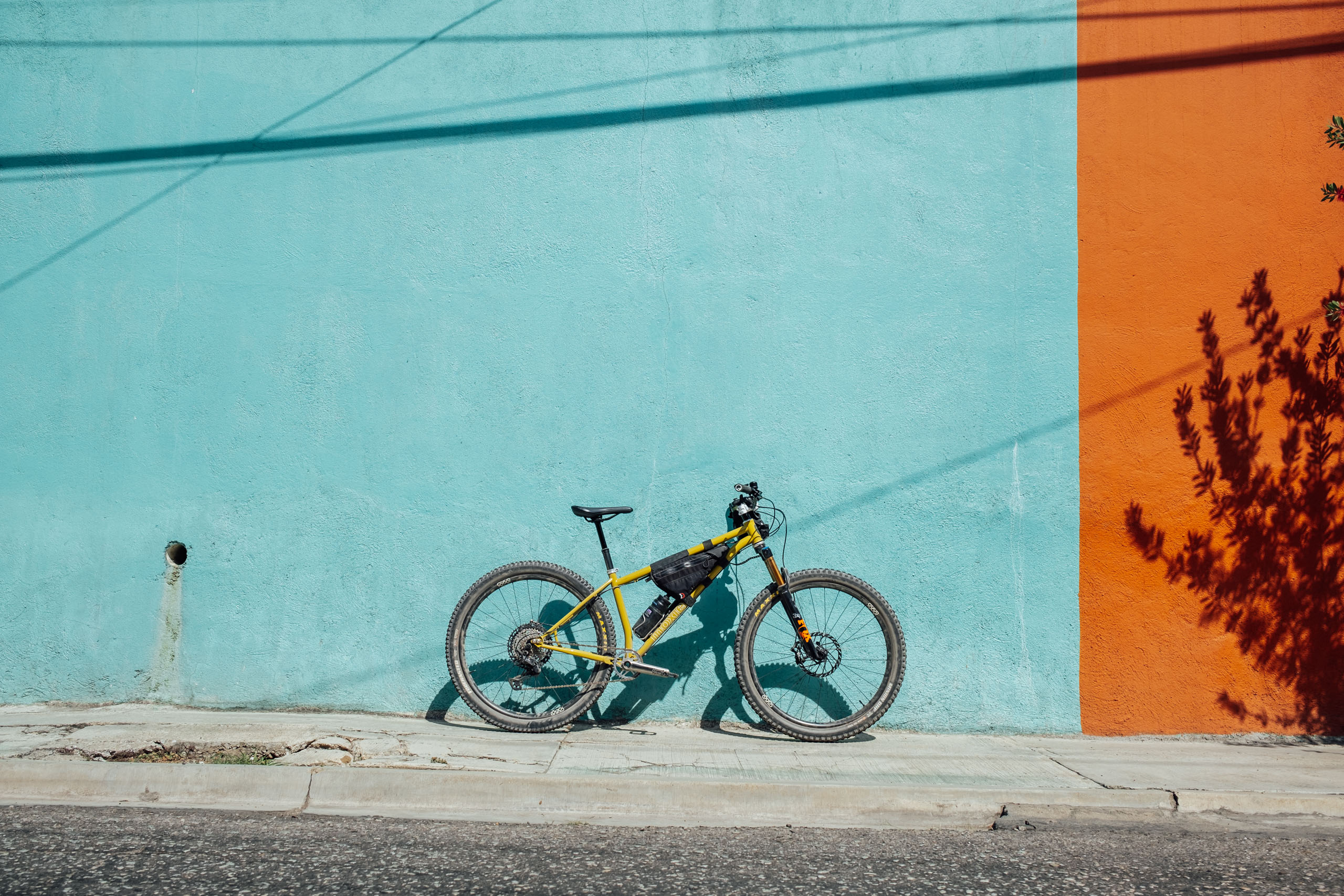
Geometry and Sizing
On paper—and in photos—the Pipedream Moxie MX3 is pretty wild looking. It looks like it emblematically tacks an extra H or two into the term Hardcore Hardtail. Alan admits being tuned into the chatter about long/low/slack via Mondraker, Geometron, and others when he conceived the Moxie in 2015-16. He was curious how certain adaptations could benefit steel hardtails of that ilk. Longer dropper posts were gaining steam, and the hardtail frames of the day were too tall to fit them. The most obvious need was a shorter seat tube, but he also wanted to experiment with a significantly steeper seat tube angle, which consequently increases the reach of the bike, thus requiring a longer front center.
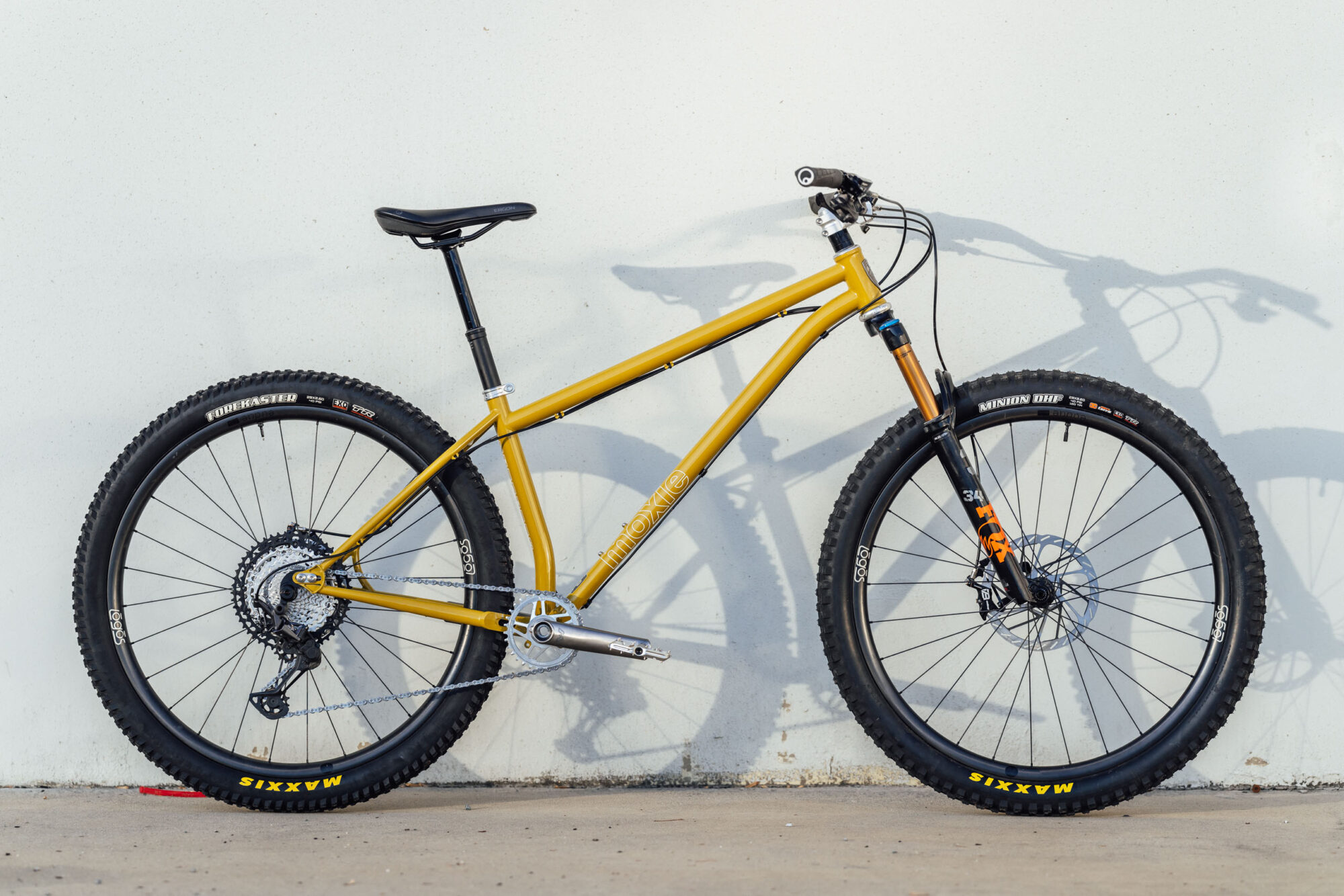
These two directions and a low stack height ultimately begat Pipedream’s modus operandi: Drop Optimised Geometry, perhaps the best acronym in the bike industry. I waxed on about DOG in the S5 review, but the nutshell is as follows: it’s a geometry archetype that’s based on a notably slack head tube angle, a decidedly steep seat tube angle, a short seat tube, a low stack height, and a long front center. A lot of bike brands have cobbled most of this equation into their bikes, but many have also missed the mark, in my opinion.
| Size | Longish | Long | Longer |
|---|---|---|---|
| Rider Height (Recommended) |
4’11”-5’8″
150-173cm
|
5’6″-5’11”
168-180cm
|
5’10”-6’4″
178-193cm
|
| Head Angle | 64° | 64° | 64° |
| Seat Tube Angle (effective) | 77.5° | 77.5° | 77.5° |
| Seat Tube C-T | 395mm | 420mm | 420mm |
| Top Tube Length (effective) | 580mm | 610mm | 650mm |
| Head Tube Length | 105mm | 105mm | 105mm |
| BB Drop | -64mm | -64mm | -64mm |
| Chainstay Length | 425-441mm | 425-441mm | 425-441mm |
| Wheelbase | 1198-1214mm | 1224-1240mm | 1264-1280mm |
| Reach | 440mm | 470mm | 510mm |
| Stack | 642mm | 642mm | 642mm |
Aside from the two glaring angles in the above chart, one thing you’ll notice right away about the Moxie’s geometry is the peculiar sizing definitions. Based on Pipedream’s rider height recommendations, the Longish is similar to a small/medium, Long is like a medium/large, and Longer is something like a large/XL. At 6’0” tall, I fit squarely in the Longer camp, but it’s truly the longest bike I’ve ever ridden. It’s actually the first bike I’ve ever been able to comfortably build with a 35mm stem. Usually, 50-70mm is the norm based on my oddball fit—long arms, long legs, and a short torso—which often results in falling in between sizes (large and XL).
Getting back to those angles, the Moxie’s 64° head tube and 77.5° seat tube seem incredibly progressive. However, those numbers are a little misleading when comparing the Moxie to some other bikes. The stated geometry is based on an axle-to-crown length of 555mm, so, much like the Sirius we reviewed, the real geometry of the frame is “hidden in plain sight.” 555mm is essentially the axle-to-crown length of an un-sagged 140mm fork. Many hardtails state their geometry measurements based on a sagged fork, where the fork is compressed as if a rider is seated in a neutral position on the bike—in my opinion, that’s a more relevant set of numbers, particularly if you’re comparing it to a rigid bike or one with front and rear suspension, which stays consistent (aside from standover and bottom bracket numbers).
To figure out the Mx3’s real geometry, I decided to use my angle-ometer with the 140mm Fox34 fork sagged to 75% of its travel (25% sag). My findings were as follows: the actual head tube angle measured 64.7° and the effective seat tube angle was roughly 76.6° based on holding a straight edge from the center of the bottom bracket to the center of the seatpost at the rails with the saddle rails level to the bars. Those aren’t exact numbers, but it’s interesting nonetheless. The Mx3 isn’t quite as wild as it looks despite still being the longest, lowest, and slackest bike I’ve tried. The most surprising was the seat tube angle, which I’ll talk more about when comparing it to the TransAM below.
Fork Length
All that being said, the Moxie is designed around forks with 140mm to 170mm of travel, which is a pretty broad range. That makes the 555mm AC height I referenced a decent benchmark for those interested in outfitting the Moxie as a long-travel hardtail. A sagged 160mm fork probably comes in at around that number, depending on the brand and the fork model’s stack height.
Speaking of which, I built the Moxie up with a 140mm fork for a reason. I’ve developed a theory over the last few years that 120-140mm is the sweet spot for hardtails. The reason behind that has a lot to do with Pipedream. The Sirius S5 was a game-changer for me. It shifted my perception about what hardtails were capable of and why. It was equipped with a 110mm fork, and that’s all it needed to be the most confident hardtail I’d ridden. In short, its stellar geometry doesn’t change much when the fork is active; there’s simply not much variation as opposed to a longer-travel fork that can dramatically affect the bike’s angles and the rider’s body position while it’s in different places within its travel.
The Moxie Versus
There’s a little magic in the Moxie’s geometry. It relies on all the same principles as the Sirius but with a little bit bigger fork. There’s no better way to understand that than by comparing it to others. Here, I’ll offer a few brief takes on the Moxie versus a few similar bikes I’ve reviewed recently. The table below lists the last few progressive hardtails I’ve tested in chronological order, each with geometry numbers based on a size large—or Longer in the case of the Moxie and Sirius.
| Bike | Chameleon | SolarisMax | Sirius | Trans AM | Moxie |
|---|---|---|---|---|---|
| REACH | 465 | 481 | 485 | 485 | 510 |
| STACK | 638 | 629 | 605 | 646 | 642 |
| EFFECTIVE TT LENGTH | 643 | 651 | 632 | 640 | 650 |
| HEAD TUBE ANGLE | 65° | 65.7° | 65° | 64° | 64° (64.7) |
| SEAT TUBE ANGLE | 74.4° | 75° | 77.5° | 76.5° | 77.5° (76.6) |
| SEAT TUBE LENGTH | 430 | 460 | 420 | 430 | 420 |
| HEAD TUBE LENGTH | 120 | 120 | 105 | 110 | 105 |
| CHAINSTAY LENGTH | 425-437 | 444 | 425-441 | 425-437 | 425-441 |
| WHEELBASE | 1208 | 1229 | 1195-1211 | 1246-1258 | 1264-1280 |
| BOTTOM BRACKET DROP | 56 | 60 | 64 | 50 | 64 |
| FRONT CENTER | 783 | 786 | 778 | 826 | 846 |
Honestly, the latter four bikes have all but erased the Chameleon from my memory bank. It was a fun bike at the time, but the harsh aluminum frame and short reach aren’t my cup of tea. A couple of the others on this list are birds of a slightly different feather.
Pipedream Moxie vs. Transition TransAM
The Transition TransAM is probably the closest comparable in that group. It and the Mx3 share a lot of similarities, and I generally thought the TransAM was okay during my time with it. Testing the 150mm TransAM helped solidify my statement above about 120-140mm forks being the sweet spot. The TransAM was a little inconsistent, particularly in the traction department. Some of that has to do with fit, geometry nuance, and fork quality/tuning, but after getting to know the Moxie with a 140mm fork, I rest on my laurels.
Generally speaking, the Mx3’s significantly lower bottom bracket and longer front-center give it a little more, well, moxie and make it a far more confident descender. It’s also a better climber and has a more forgiving frame without the harsh feel I got from the Transition. And as I mentioned in the TransAM review, the Moxie’s seat tube is 0.6° slacker based on the effect of the curved seat tube. This seemed to make a huge difference. As quoted from the review, the TransAM’s “steep seat tube seemed to accentuate bumps, exhibiting something like a catapult effect and making the ride feel rougher and slightly more taxing while seated on rough trails.” I didn’t have this issue with the Moxie. In short, the ultra-steep seat tubes found on modern bikes work better with full suspension, in my opinion. On a hardtail, they can be a bit too much and have ill effects on ride quality. A friend of mine said the same thing about the Kona ESD’s 77.5° STA, which is also compounded by a longer-travel fork and a straight seat tube.

Pipedream Moxie vs. Cotic SolarisMax
Based on my experience, the SolarisMax could almost be considered conservative compared to the Moxie or the S5. The numbers are only minimally different between the two, but the Cotic is a completely different beast with different capabilities. In the grand scheme, the Cotic might be a better choice for dirt road riding—the +1° steeper head tube angle is a little more manageable and requires less work while spinning along dirt roads. And the Cotic has a much larger frame bag area and more mounts. However, I found the Pipedream Moxie to be superior when it comes to both steep climbs and descents. In Oaxaca this year, I rode sections of trail that I shied away from the previous year on my Cotic, and I generally felt that on good days, I was descending (and climbing) better than ever.
Moxie vs. Sirius
The Sirius S5 is like a smaller version of the Moxie, really. Riding the two back to back, they both have a lot of similar characteristics. Surprisingly, the Moxie has much less flop than the Sirius and feels superior climbing out of the saddle as a result. I’ve ridden them both in singlespeed mode and greatly prefer the Moxie for that reason. It simply feels more stable when pedaling.
As mentioned above, the two both have a custom-butted, heat-treated CrMo 4130 tubeset, and the Moxie uses the same rear triangle. Their main tubes are different, however. The top tube on the Sirius is 31.8mm vs. 34.9mm on the Moxie, and the down tube on the Sirius is 34.9mm vs. 38.1mm on the Moxie. The butting profiles of these tubes are also appropriate for their intended use—the Moxie is optimized for a longer travel fork and for a more aggressive riding style. I was expecting the Moxie to feel a lot harsher because of the bigger tubes, but it really doesn’t. Heavier and more solid, yes, but it doesn’t feel like a tank.
Still, the Sirius has a similar stalwart confidence on descents, albeit a little less so. It’s also quicker handling and more playful than the Moxie. Of course, part of that is because the Moxie has a 1° slacker head tube, but I think most of it is due to the fact that the Moxie is substantially bigger than the Sirius. The size Longer Moxie has a 25mm more reach and a whopping 70mm longer wheelbase! Even with a 35mm stem and the seat slid forward, the size Longer Moxie Mx3 feels very long.
Most confident hardtail ever?
When I was chatting with Alan about those differences, I asked why the Moxie was invented in the first place. He replied the true reason he designed it was personal: “I’m not getting any younger! I wanted a bike that would confidently tackle increasingly steeper and technical terrain and which would ‘save my ass’ while doing so.” This resonated with me. I’m certainly beyond the bounciness of youth, and I’m not one of those people born without a fear gene. As a result, I can feel the difference that a degree slacker head tube angle makes on a mountain bike when facing down a steep and rubbly descent. That being said, I also don’t think bikes that dumb down trails are the answer. Tacking on 160mm of front and rear suspension makes things easier, but in a way that smooths out line choice and boosts confidence to go faster. Bikes like the Moxie provide a different toolset to tackle these trails. It comes alive on tough terrain and lets you feel your way through it, remaining poised and in control the entire time.
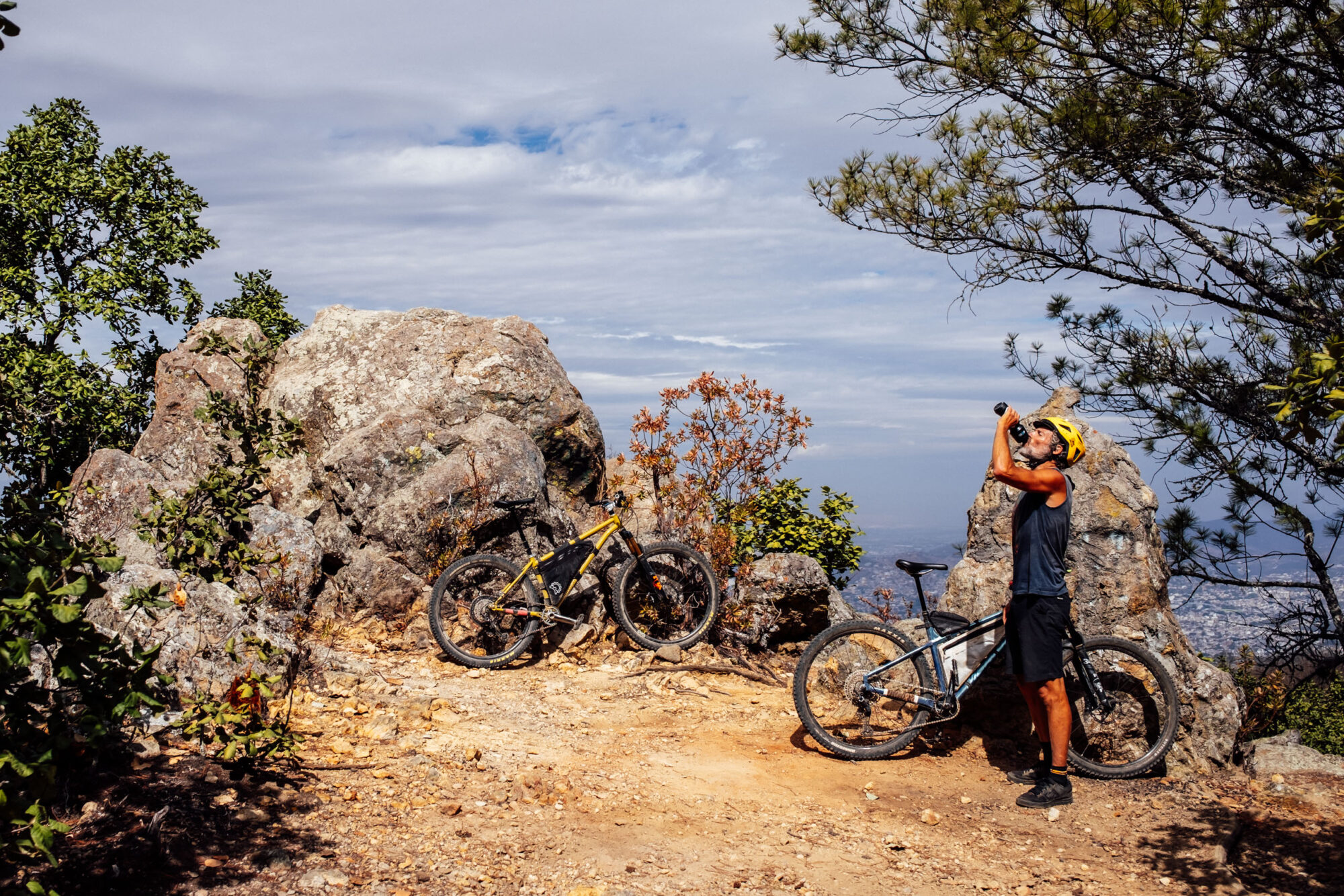
That’s largely the reason I used the term confident instead of confidence-inspiring in the heading of this section. Riding a 180mm travel full-squisher would no doubt be confidence-inspiring, but like the Sirius S5 I reviewed, I found the Moxie to possess a certain poise that enables it to remain confident throughout different obstacles and moves. In layperson’s terms, it’s not the type of bike that leads you to “write checks you can’t cash.” A hardtail inherently limits your speed—maybe to a different degree for everyone—but I never felt like I got in over my head with this bike. It’s almost as if it constantly gives you feedback about what it can and wants to accomplish, and it does so with grace. It’s a hard charger that rewards finesse and body position, but it also can be patient and forgiving. Throughout my time with it, I felt like I was riding with more confidence and becoming a more competent rider as a result.

Bikepacking + How does it pedal?
We drove down to Mexico to live for a couple of months over the winter, and I had the luxury of bringing two bikes. The other was the more upright Stooge MK6, which I expected to ride more than I did. Instead, I got pretty fixated on the Moxie and used it on all types of rides in an attempt to dissect it for this review. What I found was a bike that was far more versatile than the geo chart led me to believe.

Most people would gloss over the Moxie when looking at it through a bikepacking-specific lens. It lacks mounts under the down tube, there are no provisions for racks, and the frame triangle isn’t gigantic. But if you apply the any bike’s a bikepacking bike theorem, the Moxie has plenty of potential. And after all, there are plenty of axle-mount racks, rackless bags, and accessories to make it work, as evidenced by the photos here.
Don’t get me wrong, it’s not a quick and upright happy-go-lucky bike. When I was just pedaling on dirt roads or gravel, or bikepacking, all of which I did a fair amount of this past winter in Oaxaca, I could feel the difference between it and a less-progressive mountain bike. Because of its length, the chin-over-stem stance that bikes like the Mx3 call for makes it a little more work to winch up a long gravel climb than it would be on a moderate ATB-style bike. But that’s expected, and it’s not over the top with the Moxie. It tracks surprisingly well and doesn’t feel dog-slow, as its geometry concept acronym might imply.
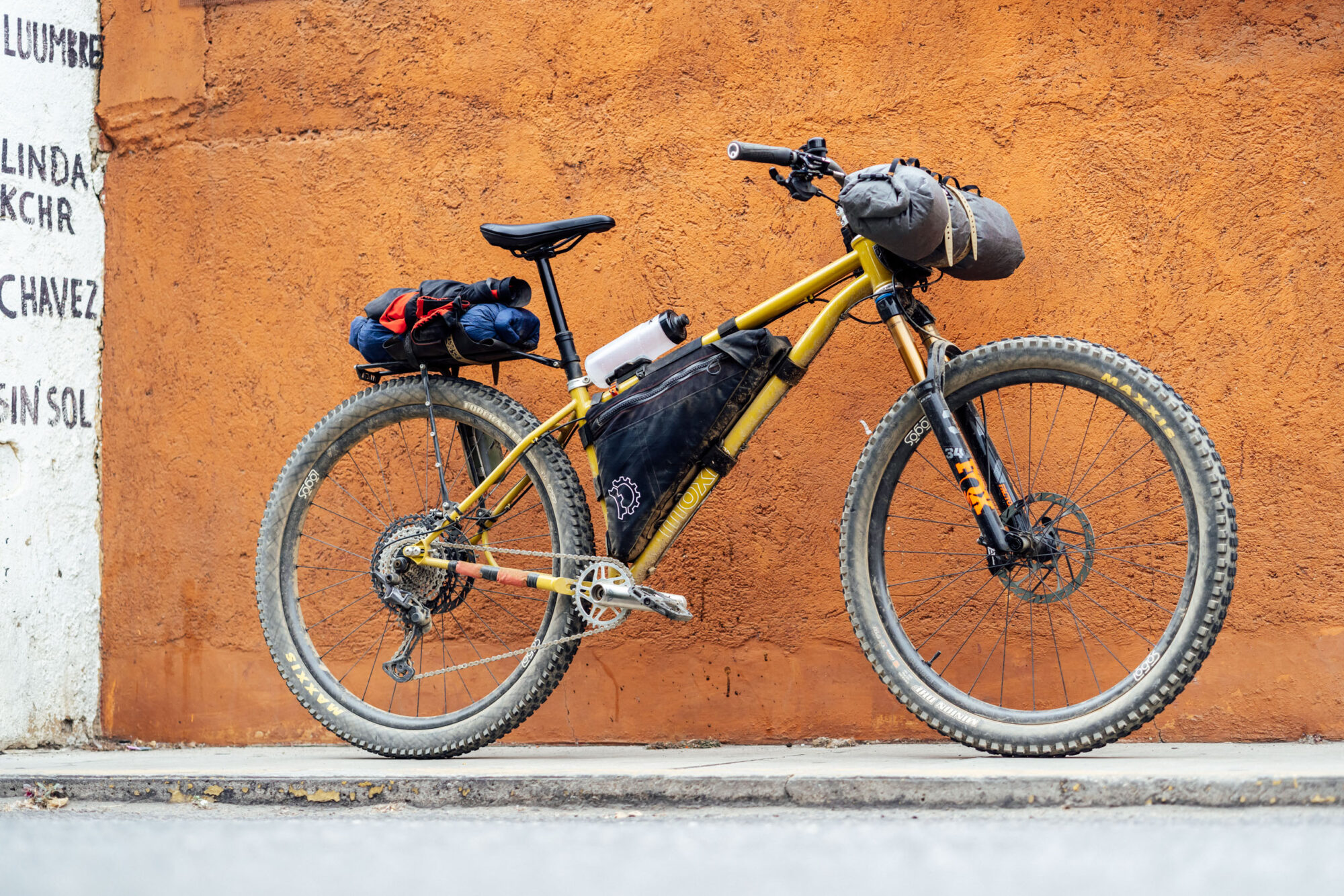
- Model/Size Tested: Pipedream Moxie, Longer, Desert
- Actual Weight: 30.43 pounds (13.8 kilograms)
- Place of Manufacture: Taiwan
- Price: £695–795
- Manufacturer’s Details: Pipedream Cycles
Pros
- A magical geometry that works well for folks in between sizing
- The most confident hardtail I’ve ridden
- Outstanding climber, particularly on steep bits and technical puzzles
- Excellent and predictable traction in corners and when climbing steep pitches
- Stable bike that tracks well and pedals a lot better than you might expect
- Beautiful gusset-less frame
- Automatic entry into underground Pipedream forest meetup club
Cons
- I’d love to see bottle bosses under down tube
- Rack mounts might be nice, too
- Sizing could be challenging for some
- A 29 x 2.6” rear tire is a little tight when dropouts are slid forward
Wrap Up
I can’t really express how much I’ve been impressed with this bike. The Pipedream Moxie Mx3 isn’t a fast and light hardtail that’s going win races, and it isn’t equipped with all the provisions you might want in a bikepacking bike, but it has something other bikes don’t. Perhaps its manifest destiny, but the concept of the extra Mx element printed on the seat tube kind of sums it up.
In essence, it’s a hardtail made of steel, but there’s an extra ingredient in there that takes it to another level. To me, that’s a perfectly executed set of angles, curves, and measurements coupled with with a nice steel tubeset that isn’t harsh and ticks a lot of boxes. It’s certainly become my favorite trail hardtail to date. If you’re looking for a simple, progressive bike to work through trail puzzles, dabble in bikepacking, climb extremely well, and make you feel 10 years younger on sketchy descents, the Pipedream Moxie Mx3 might just be your huckleberry.
I covered a lot here, but I could have gone on for a couple thousand more words, and I’m sure I left out a few things. Please leave any questions or thoughts in the conversation below, and I’ll try to answer them.
Please keep the conversation civil, constructive, and inclusive, or your comment will be removed.













